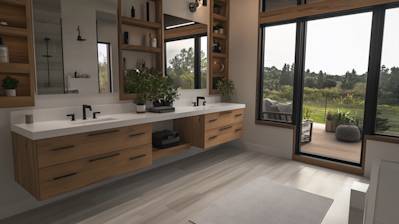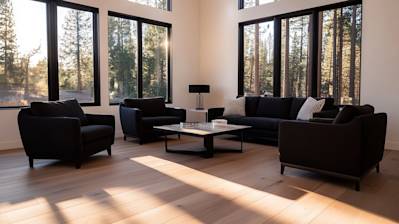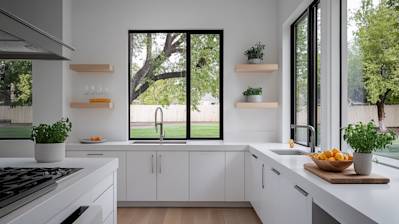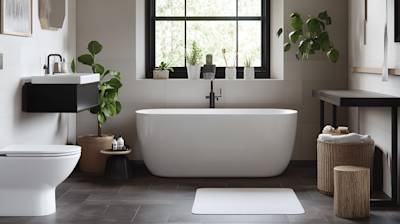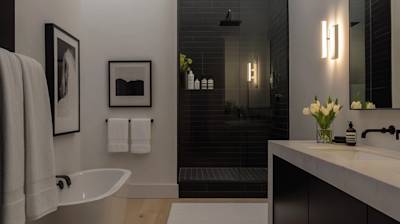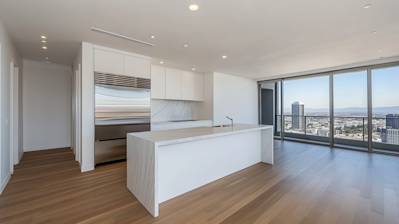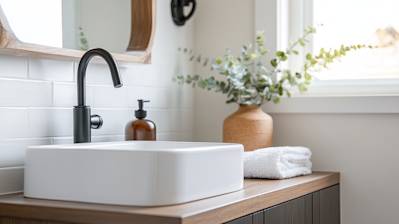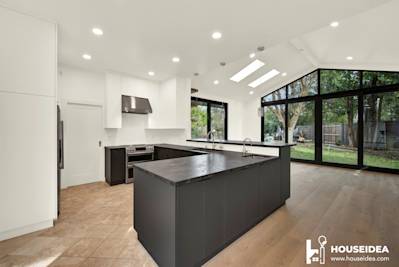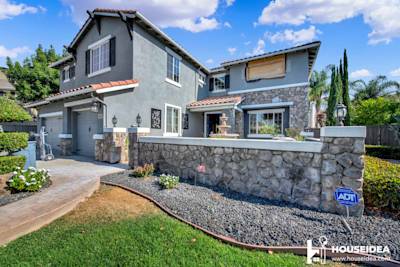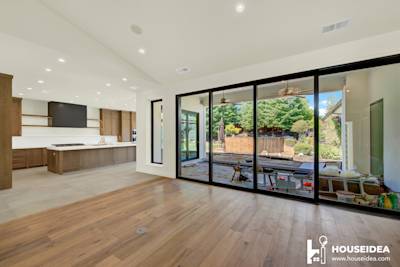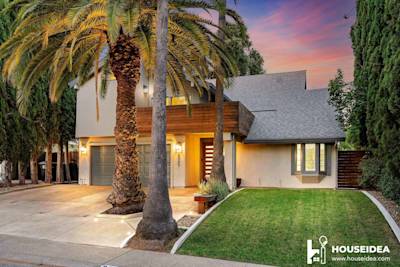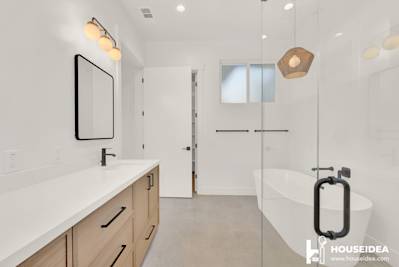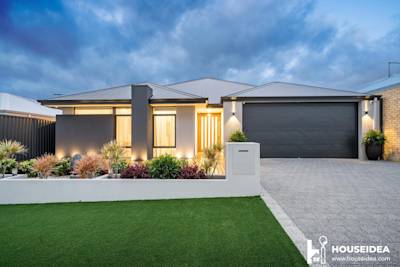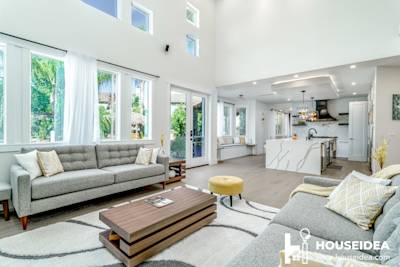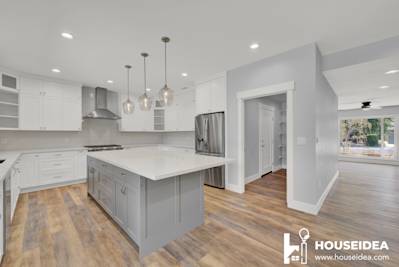When it comes to planning the exterior design of a house, many homeowners find themselves gravitating towards the timeless elegance of brick walls. However, traditional brick walls can be expensive and time-consuming to construct. That's where the beauty and benefits of a brick veneer wall come into play. They offer the aesthetic appeal of brick but are more cost-effective and easier to install. This article delves into everything you need to know about brick veneer walls, including what they are, their benefits, how they're installed, and maintenance tips.
Understanding The Concept Of A Brick Veneer Wall
A brick veneer wall, also known as a facing brick, is a type of wall surface treatment that uses thin slices of brick to give the impression of a full brick wall. These veneers are usually about 3/4 to 1 inch thick and can be applied to various types of substrate walls, such as wood, concrete, and more. Unlike traditional brick walls, the brick veneer doesn't bear the weight of the building but instead serves an aesthetic and functional purpose.
Distinguishing Features of Brick Veneer
What sets brick veneer apart from other types of wall finishes includes:
- It provides the same traditional, stylish look as regular brick at a fraction of the cost and with less installation time.
- Brick veneer is lighter in weight compared to traditional brick, making it easier to handle and install.
- Brick veneer is more versatile in design as it can be used both indoors and outdoors.
- It's low maintenance and can last a lifetime with proper care.
The Construction Of A Brick Veneer Wall
The construction of a brick veneer wall involves several steps, including preparing the wall surface, applying the veneer, and finishing with mortar. Unlike full brick walls, where the brick is part of the structure of the building, a brick veneer wall is attached to the building like a skin. This ‘skin’ can be applied to an existing wall or included in the construction of a new building.
Installation of Brick Veneer Walls
-
The first step in installing a brick veneer wall is to prepare the base wall. This may involve cleaning, repairing, or smoothing the surface.
-
Once the wall is ready, a layer of water-resistant barrier is applied. The barrier prevents moisture from seeping into the wall and potentially causing damage.
-
Next, the brick veneer is applied to the wall. The veneer pieces are arranged on the wall surface and secured with adhesive or mortar. Each row of veneer should be level, and there should be consistent spacing between bricks.
-
Finally, mortar is applied between the bricks in a process called "pointing." The mortar not only adds visual appeal but also reinforces the veneer's stability and weather resistance.
Caring For Your Brick Veneer Wall
Like any other building material, brick veneer walls require some form of maintenance to keep them looking their best and ensure they last for years.
Brick Veneer Wall Maintenance Tips
Here are some useful tips to keep your brick veneer wall in great shape.
-
Regularly check your wall for signs of damage or wear and tear. This includes chipping, fading, and crumbling of the brick or mortar. If you detect any issues, get them fixed as soon as possible to prevent further damage.
-
Use a soft, damp cloth or a soft-bristled brush to clean your brick veneer wall. Avoid using harsh chemicals as they can cause discoloration or other damage.
-
Seal your brick veneer wall to protect it from moisture and prevent water damage. It is recommended to seal your brick veneer wall every few years, depending on the climate and exposure.
Embracing The Beauty Of Brick Veneer Walls
Brick veneer walls are becoming a popular choice among homeowners and designers alike for their aesthetic appeal and affordability. They allow you to enjoy the classic look of brick without the associated cost and construction complications of full brick walls. With their low maintenance requirements and long lifespan, brick veneer walls are a sound investment for any homeowner.
Frequently Asked Questions about Brick Veneer Wall
What is the composition of a brick veneer wall?
A brick veneer wall is composed of a single layer of bricks attached to the structural wall of a building. Behind the bricks, there is a cavity that allows water to drain away and air to circulate, reducing moisture and mould risks. The interior structural wall can be made of wood or metal framing or concrete blocks. This type of wall is simply a decorative exterior finish and doesn't bear the building's load.
How is a brick veneer wall installed?
Brick veneer wall installation begins with the construction of a support system, usually called a "wall tie system". After that, a layer of sheathing is installed followed by an air cavity and finally the brick veneer itself is put in place. To allow for proper drainage, weep holes are created at different points allowing water to escape from the cavity behind the bricks.
How does a brick veneer wall differ from a traditional brick wall?
Traditional brick walls, commonly known as "solid brick walls", comprise two layers of bricks that bear the building's weight. Conversely, a brick veneer wall comprises a single layer of bricks attached to the structure's exterior for aesthetic purposes. The structural wall behind the brick veneer carries the structural load.
Is brick veneer more cost-effective than real brick?
Yes, in general, brick veneer tends to be more cost-effective compared to solid brick. This is because, unlike solid brick, brick veneer doesn’t require reinforced footings or foundations. However, the overall cost may depend on various factors such as the size of your project, your location, and the specific type of brick veneer you choose.
How durable is a brick veneer wall?
Brick veneer walls can be incredibly durable and long-lasting if properly maintained. They can resist severe weather conditions and external damage effectively. Moreover, brick veneer does not require painting and hence maintenance costs can be quite low.
Is a brick veneer wall a suitable choice for all climates?
Brick veneer walls are suitable for virtually any climate given their durability. They can stand up well against harsh weather conditions and offer thermal resistance making them a desirable choice for regions with various climatic conditions.
How do I maintain a brick veneer wall?
Maintaining a brick veneer wall is relatively simple. The main task is to regularly clean the wall to prevent the buildup of dust and dirt. You can use a low-pressure hose to gently wash the bricks. In case of stubborn stains, you might need to scrub using a mild detergent. Make sure to properly rinse the surface thereafter. It is also recommended to periodically inspect the wall for any structural damage or repairs needed.
Can a brick veneer wall be used in interior design?
Absolutely! Brick veneer walls are not just for exteriors. They can add an appealing rustic or industrial charm to the interiors as well. Whether it’s for a feature wall in your living room or a kitchen backsplash, a brick veneer wall can enhance your space’s aesthetics.
Pros and Cons of Brick Veneer Wall
Pros of Brick Veneer Wall
Attractive Aesthetic
One of the prominent strengths of brick veneer walls is their visually appealing aesthetics. They have a traditional charm and stylish appeal that significantly enhance the overall appeal of your house.
Durability
-
Brick veneer walls are notably resilient and can withstand the test of time. They are not easily affected by adverse weather conditions and can maintain their initial quality for an extended duration.
-
Due to their superior durability, brick veneer walls need less frequent replacement and repair, saving you maintenance costs in the long run.
Heat Insulation
A brick veneer wall provides excellent protection against heat. The wall acts as a buffer, absorbing and distributing heat, therefore, maintaining a moderate temperature in both winter and summer seasons. This insulation feature aids in reducing energy costs by lessening the need for heating and cooling appliances.
Fire Resistant
Another advantage of a brick veneer wall is that it’s fire resistant. Bricks are made from clay that is highly resistant to fire, thus providing an extra layer of protection for your home.
Cons of Brick Veneer Wall
Installation Cost
- The primary drawback of brick veneer walls is their high installation cost. The process involves multiple stages that require professional skills and specialised tools minimising the possibility of a DIY project.
- Additionally, the cost of the bricks themselves is also relatively high which increases the overall cost of the project.
Installation Time
Compared to other siding options, installing brick veneer walls is more time-consuming. Each brick has to be individually placed and joined with a layer of mortar which adds to the construction time.
Maintenance
- While brick veneer walls are durable, they are not entirely maintenance-free. Issues such as efflorescence (mineral deposits) and mortars erosion can occur over time.
- Similarly, while brick veneer walls resist most climatic conditions, they can be vulnerable to moisture. If water seeps into the brick and then freezes, it can cause the brick to crack and deteriorate - a condition known as 'spalling'.
Difficulty in Alteration or Extension
Once a brick veneer wall is established, it may be challenging to alter the layout or perform extensions. Cutting through brick wall requires specialised tools and experience, it also increases the risk of structural damage if not done correctly.
Limited Colour Options
Brick veneer walls offer fewer colour options than other wall options. Bricks usually come in varying shades of red and brown, limiting your choices if you desire a different colour palette.
Summary
All things considered, a brick veneer wall is an excellent option for anyone looking to add a touch of elegance and strength to their property. Its outstanding resistance against harsh weather conditions and seemingly everlasting durability make it a favorite choice for many. Practically it requires minimal maintenance and is easy to clean, these qualities set the brick veneer wall apart from many of its counterparts.
On the design front, a brick veneer wall brings a timeless appeal and flexibility, easily blending with various architectural styles. From modern industrial to rustic farmhouses, the aesthetic versatility of this material is remarkable. Moreover, it offers an added bonus of thermal insulation, helping maintain a comfortable indoor temperature throughout different seasons. Truly, a brick veneer wall is a marriage of functionality and design!
But while a brick veneer wall may be costlier than other siding materials, the long-term benefits undeniably justify the initial investment. It's a smart, economical choice in the long run, considering the factor of its longevity and minimal upkeep. So if you’re going for aesthetics, durability, and cost-effectiveness, you surely can't go wrong with a brick veneer wall!
About HouseIdea
Welcome to HouseIdea, located in the heart of Sacramento, CA! We're a dedicated team of thoughtful designers and passionate creators; relentlessly striving to craft spaces that not only complement, but elevate your lifestyle. We believe that every home is a canvas filled with the potential for aesthetic magic, and our mission is to help you unlock it. Our unique fusion of creativity and practicality allows us to transform your home into an artistic representation of your individual style. We're more than just a company - we're your partners in turning your house idea into a dream come true!
Tags: brick veneer wall, brick wall, home decor,



